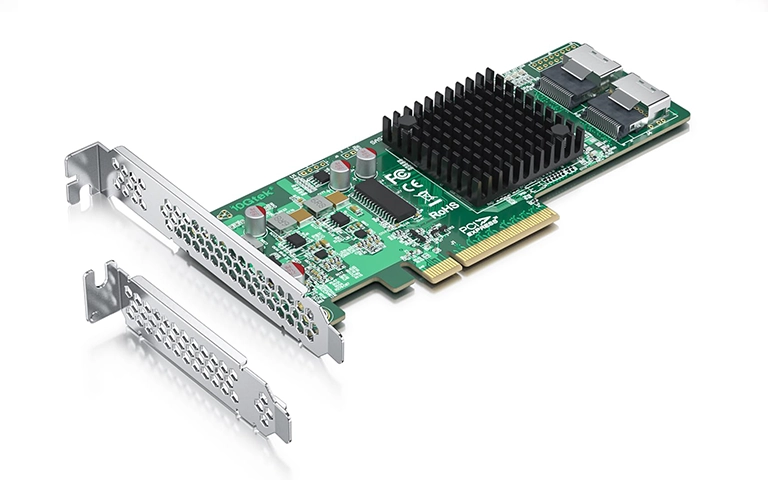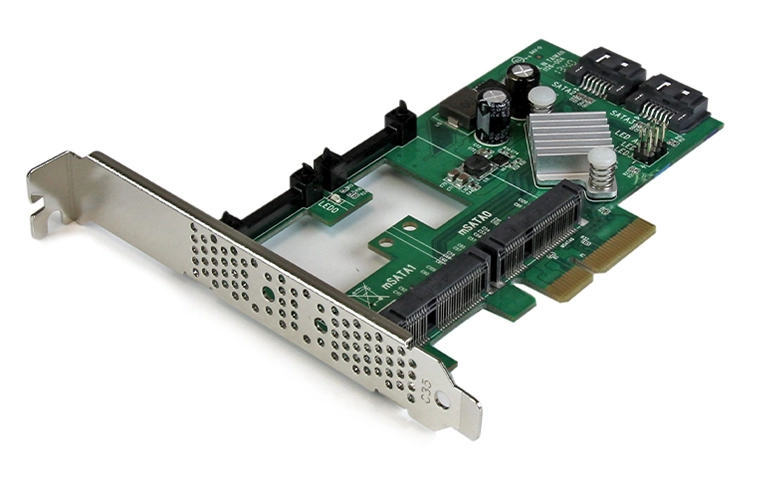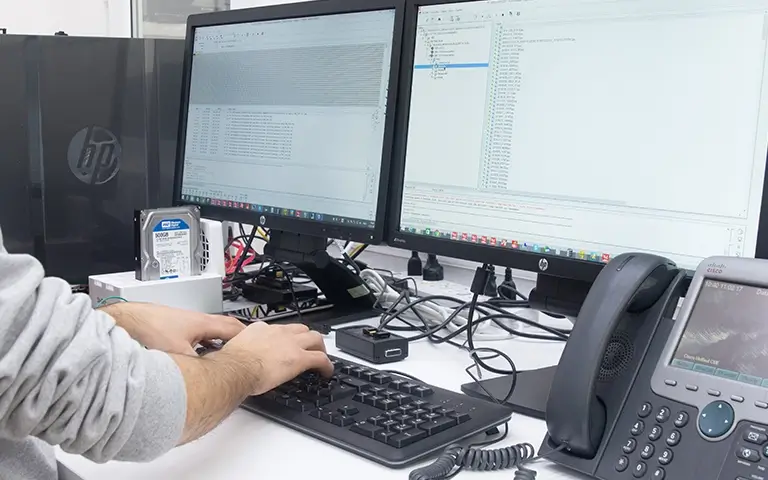A RAID controller acts as the operational centre of your storage infrastructure, coordinating how data is written, mirrored, and retrieved across every drive. When a RAID controller failure occurs, the entire array can become inaccessible, leaving critical data out of reach.
Such failures often arrive with little to no warning. Your server may function perfectly one day, only to stop detecting the array the next. Swapping the controller rarely resolves the issue, as each unit holds its own configuration data. Introducing a mismatched controller can complicate the recovery process even further.
If your RAID vanishes from the BIOS or your drives suddenly appear uninitialised, the controller is a likely culprit. At this stage, halting all activity is essential. Avoid rebuild attempts and seek a professional assessment to prevent further harm to data integrity.

What Causes RAID Controller Failure?
A RAID controller can fail for a variety of reasons, most commonly linked to ageing hardware, unstable power conditions, or corrupted firmware. Understanding the root causes helps minimise unplanned downtime and safeguards the availability of your data.
Hardware Malfunction:
Controllers rely on delicate electronic components that wear out over time. Failing capacitors, damaged connectors, or defective chips are typical triggers for sudden RAID controller failure.Power Surges or Outages:
Voltage spikes and abrupt power loss can damage the controller board or corrupt its firmware. Environments operating without a UPS are at greater risk of this type of failure.Firmware or Driver Corruption:
Incorrect updates, incompatible drivers, or incomplete installations can introduce configuration conflicts that leave the array inaccessible.Overheating:
During heavy workloads, controllers generate significant heat. Without adequate cooling and airflow, thermal stress can reduce their lifespan or create intermittent performance issues.Improper Handling or Replacement:
Installing an incompatible controller or attempting a rebuild with incorrect settings can cause irreversible damage, including permanent data loss.
For further insight into how reliability issues affect RAID hardware, visit RAID Failure Rate for a detailed look at common vulnerabilities and risk factors.
Recognising the Signs of a Failed RAID Controller
Spotting the early signs of a RAID controller failure is crucial for preventing further damage and increasing the likelihood of a successful recovery. Below are the most common indicators that your controller may be beginning to fail.
Missing or Unrecognised Array:
Your RAID volume may vanish from the BIOS or operating system, with the drives appearing as unconfigured, offline, or not detected at all.System Fails to Boot:
If the controller cannot read the array configuration, the server may freeze during startup or generate boot-related errors.RAID Rebuild Errors:
Persistent rebuild failures or incomplete synchronisation often suggest corruption within the controller’s cache or firmware.Inconsistent Drive Detection:
The controller may detect some drives but not others, or it may assign drives to the wrong ports, causing configuration mismatches.Error Codes or Beeping Alerts:
Many enterprise systems use diagnostic LEDs or audible alerts to signal controller-level faults, especially during power-on tests.Sudden Data Inaccessibility:
Even if the drives themselves appear healthy, files may become unreadable when the issue originates from the controller rather than the media.
If you notice any of these symptoms, avoid reinitialising or rebuilding the array. Instead, review the guidance in Troubleshoot RAID Failure to protect your data before attempting any corrective action.

How a Controller Failure Affects Your RAID Array
A RAID controller failure disrupts the communication path between the system and its drives, often causing the entire array to appear missing or uninitialised. Although the data still resides on the disks, the controller’s configuration details such as drive order, stripe size, and parity layout may no longer be readable.
Without the original controller or an exact configuration backup, the array cannot be reconstructed accurately.
Many users replace the failed controller expecting the RAID to mount automatically, only to find the drives marked as foreign or new. Any attempt to force the array online can overwrite essential metadata and make professional recovery far more complex.
Controller-level corruption may also lead to inconsistent parity data or out-of-sync drives, which can produce incomplete or damaged files. If this happens, the safest action is to power down the system immediately to avoid further deterioration.
For more detail on how data structures influence recovery outcomes, visit RAID File System for an in-depth look at how controllers manage storage, communication, and parity operations.
What to Do Immediately After a RAID Controller Failure
When your RAID becomes inaccessible because of a RAID controller failure, the most critical step is to avoid any action that could overwrite or alter existing data. Even well-meaning troubleshooting can make the situation significantly worse if carried out incorrectly.
Shut the server down straight away to stop the controller from attempting an automatic rebuild or reconfiguration during startup.
Every controller holds its own configuration data. Installing a new one without an exact match can overwrite vital RAID metadata and complicate recovery.
Carefully remove the drives and record the order in which they were connected. Keeping them organised helps engineers reconstruct the array accurately.
Starting a rebuild without a verified configuration can corrupt parity data and make the array unrecoverable.
Specialists can extract configuration details, determine the correct array parameters, and rebuild the RAID safely in a controlled environment.
To explore how controller-related problems lead to data loss, visit Reasons for RAID Data Loss for examples of common failure scenarios and corruption risks.

Fast turnaround times for business-critical data
Professional RAID Controller Failure Recovery Explained
Recovering data after a RAID controller failure is a highly specialised process that demands advanced tools and technical expertise. Every controller model manages parity, caching, and configuration metadata in its own way, which means the recovery approach must be tailored to the specific system.
At RAID Recovery Services, our engineers begin with a detailed diagnostic to determine the controller model, firmware version, and the precise point of failure. Once confirmed, each drive is cloned sector by sector to eliminate any risk of further degradation or data loss.
Following the cloning stage, we rebuild the array virtually using the extracted configuration information. This involves restoring the correct drive sequence, block size, stripe alignment, and parity rotation. When the array is successfully reconstructed, the recovered data is validated and transferred to secure storage for the client.
This method ensures that no original data is overwritten and that file structures remain intact throughout the recovery process.
If you would like to see how controller-level issues are addressed in real-world scenarios, read our guide on Troubleshoot RAID Failure for further insight.

Preventing Future RAID Controller Failures
Although a RAID controller failure can happen without warning, many incidents can be avoided through consistent maintenance and proactive planning. Taking these measures reduces downtime and protects the long-term integrity of your data.
Controllers generate significant heat during heavy workloads. Keep your server environment cool and ensure that vents, filters, and fans remain clear of dust.
Install an uninterruptible power supply (UPS) to protect your hardware from voltage spikes, power cuts, and abrupt shutdowns that can damage the controller.
Only apply manufacturer-approved firmware updates. Incomplete or incorrect updates may corrupt configuration data and lead to array inaccessibility.
Export and store the controller’s configuration settings whenever possible. Having a verified backup allows faster restoration if a controller needs replacing.
Use system alerts, SMART data, and monitoring tools to detect early signs of instability or communication issues between the controller and drives.
Routine inspections by qualified technicians help identify ageing components and potential risks before they escalate into failure.
For long-term protection strategies, visit Data Loss Prevention to learn how continuous monitoring and structured backups reinforce RAID stability.

Conclusion
A RAID controller failure can instantly cut off access to essential data, bringing operations to a standstill and placing valuable information at risk. Knowing the common causes, recognising the early warning signs, and taking the correct actions straight away can be the difference between a successful recovery and irreversible data loss.
At RAID Recovery Services, we specialise in diagnosing and restoring systems affected by controller faults. Our engineers manage complex recoveries with accuracy and care, ensuring data integrity is preserved and downtime is kept to a minimum.
If your RAID controller has failed or your system no longer detects the array, avoid attempting manual fixes. Contact our team for expert support and a secure, professionally managed recovery.
Trust the experts with proven results
Frequently Asked Questions
What happens when a RAID controller fails?
When a RAID controller failure occurs, the system can no longer interpret how data is organised across the drives. As a result, the array may disappear from the BIOS, appear as unconfigured, or become unreadable, even though the data remains on the disks.
Can I replace a failed RAID controller myself?
It is not advisable. Each controller carries its own configuration metadata. Installing a replacement without matching firmware and settings can overwrite this information and make recovery impossible. Professionals should extract and rebuild the configuration before any replacement is attempted.
How long does RAID controller failure recovery take?
The timeframe depends on the level of damage and the number of drives involved. In most cases, RAID Recovery Services can diagnose the issue and restore the configuration within a few working days.
Can data be recovered if the controller is completely dead?
Yes. Specialists can clone the drives, rebuild the original RAID layout, and recover the data using advanced hardware emulation and software tools, even when the controller itself no longer functions.
How can I prevent RAID controller failure in the future?
Keep firmware updated, maintain proper cooling, use a UPS for stable power delivery, and back up the controller configuration regularly. These practices help extend hardware lifespan and improve recovery readiness.